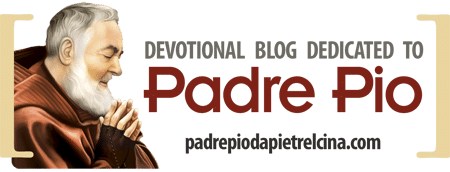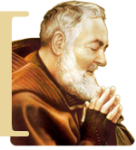Padre Pio da Pietrelcina, born Francesco Forgione, is one of the most beloved and revered figures in the Catholic Church. His devotion has spread with extraordinary intensity, touching the hearts of countless people worldwide. Saint Pio liked to describe himself with deep humility and sincerity, simply calling himself: “a poor friar who prays.“
Padre Pio, the Friar from Pietrelcina Who Became a Saint
Padre Pio (Francesco Forgione) was born on the afternoon of May 25, 1887, to Giuseppa de Nunzio and Grazio Forgione, in a humble home in Pietrelcina, a small town in southern Italy. He was still a child when he began to experience ecstasies and visions that would accompany him throughout his life. While the children of his neighborhood played carefree on the church steps of Sant’Anna, Padre Pio would sit on the stone wall, spending his time praying and reading the Gospel. Prayer shaped every day of his life. Every detail of his existence helps to reveal who Padre Pio was — a friar loved for his humility and spiritual gifts, which were already evident in his early years.

Padre Pio: A Calling that Transformed His Youth
In the peaceful and quiet town, through paths known only to the Lord, Padre Pio met Brother Camillo of Sant’Elia a Pianisi, a Capuchin friar with a flowing beard who had been assigned to collect alms in the countryside. This encounter marked a turning point for the young Francesco, who at sixteen decided to join the convent and wear the sacred habit. For him, this decision was not easy, but the desire to obey God’s call and follow Him under the banner of Saint Francis of Assisi proved stronger than any hesitation. To truly understand who Padre Pio was, one must immerse oneself in the stories of faith and miracles that marked his life. These stories tell of a man dedicated to God’s mission from a young age. As a novice in Morcone and later as a student in various other convents in the Sant’Angelo province, he became an example to all, an impeccable novice. The following years were a time of illness, pain, and physical suffering for Padre Pio, which led him far from the convent.
Padre Pio: Visible Signs of Christ’s Passion
Despite his fragile health, Padre Pio was ordained a priest on August 10, 1910, and celebrated his first Mass in the parish church of Pietrelcina on August 14 of the same year. Those years were very sorrowful. The illness, which the young friar saw as a cross placed by the Lord upon his shoulders, kept him away from convent life, from his fellow brothers, and from his teachers. He lived through that time as a punishment, until he understood that through suffering, his mission would be fulfilled. The cross became the light that illuminated Padre Pio’s path. Faithfulness and perseverance carried him even during times of temptation and spiritual torment. In front of the crucifix in the choir of the church at the San Giovanni Rotondo convent, he received the stigmata on his hands, feet, and side — the visible signs of Christ’s Passion, which had been foretold earlier by the miracle of the transverberation. These extraordinary gifts, along with his charisms — healing, conversions, bilocation, incessant prayer, and tireless work as a confessor — attracted ever-growing crowds of faithful and curious visitors.
Padre Pio: Apostle of Charity and Hope
For those wondering who Padre Pio truly was, the answer emerges in his works of mercy, his miracles, and the devotion of the millions of people who venerate him. They are drawn to his ability to embody Christian love and sacrifice. In San Giovanni Rotondo, Padre Pio wanted to create a work of charity for the poor and the suffering. In 1947, he began the construction of the “Casa Sollievo della Sofferenza” (Home for the Relief of Suffering), a large, state-of-the-art hospital, built with the help of the faithful. At his request, many Prayer Groups were formed, spreading around the world alongside the fame of the “friar with the stigmata.” On September 22, 1968, Padre Pio celebrated his last Mass at five in the morning. On the night of September 23, 1968, at 2:30 AM, he breathed his last, reuniting with God. Today, Saint Pio da Pietrelcina is venerated with great devotion throughout the Church among the saints.






